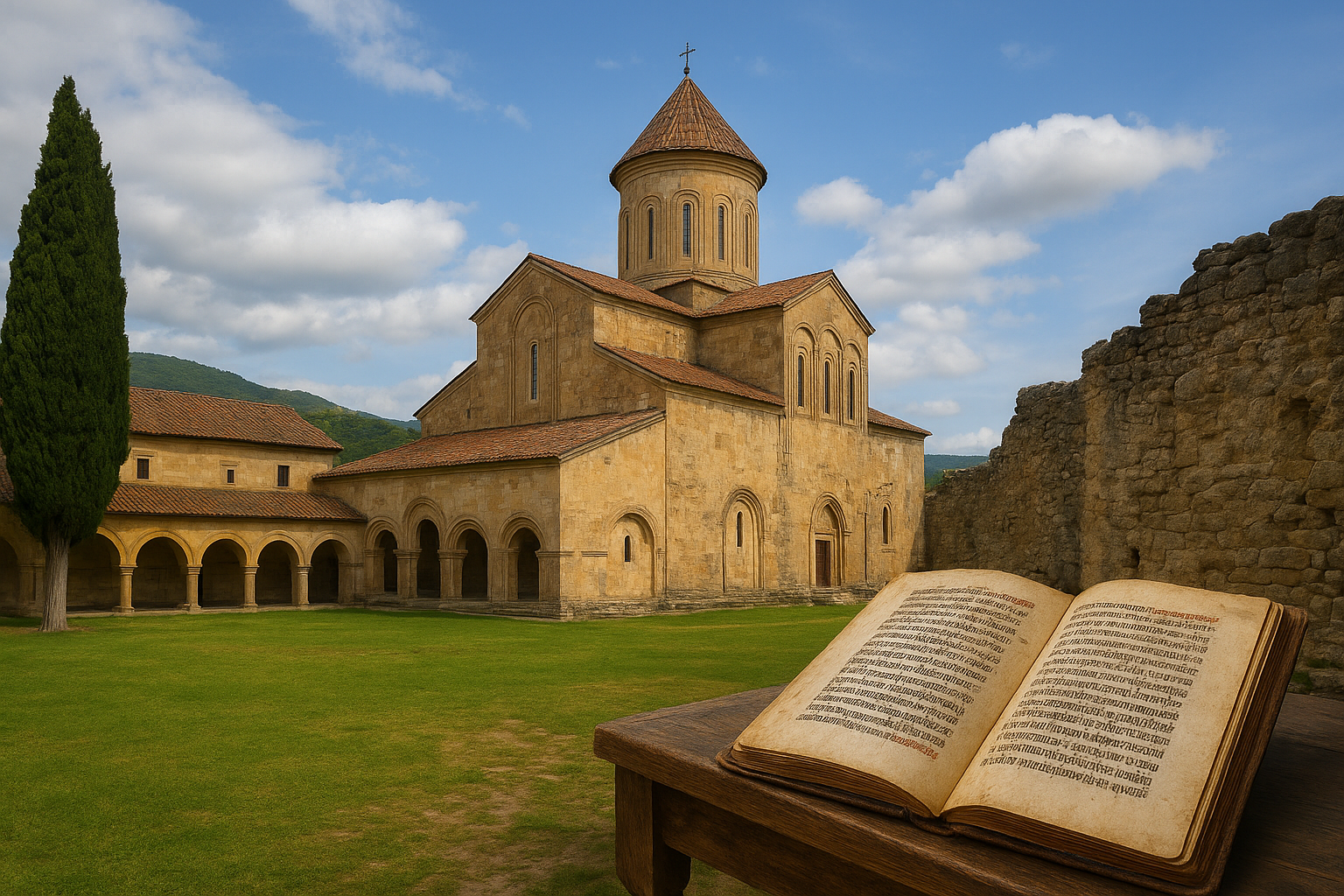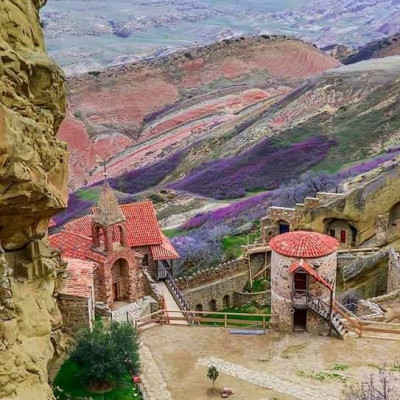
Explore the profound world of monumental heritage hidden within the hills and valleys of Georgia: the monastic libraries of the medieval period and the ancient manuscripts they preserved. These libraries were not mere storehouses but vibrant centres of learning, faith and national identity. Monasteries such as the iconic Gelati Monastery, founded in the 12th century near Kutaisi, housed enormous collections of handwritten books that reflect the three major stages of the Georgian alphabet — Asomtavruli, Nuskhuri and Mkhedruli. Within these walls scribes and scholars translated, copied and illuminated texts of theology, philosophy and history. The roots of this tradition go back even further: Georgian monks established scriptoria and libraries in the Christian East, including at the Iviron Monastery on Mount Athos and at the Georgian monastic enclave near Jerusalem. These overseas centres testify to the broad reach of Georgian literary culture in the medieval era. A manuscript such as the famous Adysh Gospels (dated 897 AD), created at the Shatberdi Monastery in the province of Klarjeti (now northeastern Turkey), is among the oldest surviving Georgian Gospel books. Within Georgia itself, the National Centre of Manuscripts in Tbilisi preserves more than 10 000 Georgian manuscripts and up to 40 000 historical documents, attesting to the breadth and resilience of this cultural treasure. The monastic libraries played multiple roles: spiritual asceticism, manuscript production and scholarly translation. They provided a home for liturgical texts, biblical commentaries, pseudo-patristic works and historical chronicles. They served also as a bridge between Greece, Byzantium and the Caucasus, adapting Greek theological works into Georgian, while simultaneously fostering native composition. One example: the Gelati collection contained translations of works by St John Chrysostom, homilies of Georgian saints like Grigol of Nazianzus and other exegetical writings. Visiting these sites today offers a unique experience: to walk beneath ancient vaults where manuscripts were painstakingly copied in candle-lit rooms, to hear the faint whisper of turning parchment in a quiet archive, to glimpse the ornate initials and gold-leaf miniatures that mark the union of art and devotion. Such manuscripts often feature two-column layouts, cinnabar-painted headings, and intricate command of script and form. For instance the Gelati manuscripts include descriptions of folio sizes, column counts, scribal hands and decorative elements. For travellers interested in exploring this heritage, a few practical tips: plan visits to monasteries in Georgia such as Gelati or other less-known but historically rich sites; schedule time at the National Centre of Manuscripts in Tbilisi to see select works; engage a guide familiar with Georgian ecclesiastical history to bring the story alive. Bring a notebook: the scripts (Asomtavruli and Nuskhuri) look strikingly different from the familiar Mkhedruli of modern Georgian, and noticing the nuances deepens one’s appreciation. Respecting the sacred nature of these spaces is important: many monastic libraries are still part of functioning monastic complexes, so modest dress, quiet behaviour and confirmation of visiting hours is wise. The story of Georgian monastic libraries and manuscripts is in essence the story of Georgia’s intellectual life — a testament to resilience through invasions, cultural shifts and modernity. The very survival of these works, often moved from war-torn regions, smuggled or hidden, and restored in the 20th century, shows how deeply Georgians value their written heritage. The manuscripts were not simply artefacts but carriers of identity, language and faith through centuries. For your journey with “Georgian Holidays,” exploring these sites offers not just sightseeing but a connection to a living tradition. Let your itinerary include the quiet sanctuaries of Georgia’s manuscript heritage, and allow the silent books to speak of centuries of devotion, artistry and scholarship.






 Deutsch
Deutsch
 русский
русский
